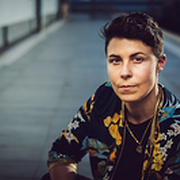Zeyn Joukhadar
Autor(a) de The Map of Salt and Stars
About the Author
Disambiguation Notice:
(eng) Zeyn Joukhadar identifies as male. Please do not change gender or pronouns on this page based on older interviews and publicity materials referring to him as female.
Image credit: via goodreads
Obras de Zeyn Joukhadar
Everything Blooms (Electric Literature's Recommended Reading Book 281) — Autor — 1 exemplar(es)
Everything Blooms 1 exemplar(es)
Mizna 21.1 - Queer and Trans Voices 1 exemplar(es)
Associated Works
Etiquetado
Conhecimento Comum
- Nome padrão
- Joukhadar, Zeyn
- Sexo
- male
- Nacionalidade
- USA
- País (para mapa)
- USA
- Local de nascimento
- New York, New York, USA
- Agente
- Michelle Brower
- Aviso de desambiguação
- Zeyn Joukhadar identifies as male. Please do not change gender or pronouns on this page based on older interviews and publicity materials referring to him as female.
Membros
Resenhas
Listas
Prêmios
You May Also Like
Associated Authors
Estatísticas
- Obras
- 6
- Also by
- 4
- Membros
- 1,084
- Popularidade
- #23,706
- Avaliação
- 3.7
- Resenhas
- 49
- ISBNs
- 34
- Idiomas
- 7
- Favorito
- 1
















